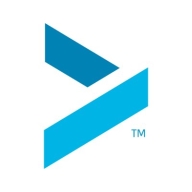

OpenText Core Application Security and Cequence Security compete in the advanced security solutions sector. Cequence Security has an advantage with its comprehensive features, which are considered valuable for the investment, even though OpenText offers better pricing and support.
Features: OpenText Core Application Security includes robust threat detection, integration capabilities, and efficient security protocols. Cequence Security focuses on managing API threats, superior automation, and effective handling of complex API environments.
Ease of Deployment and Customer Service: OpenText Core Application Security provides an efficient and straightforward deployment process with strong customer service support. Cequence Security requires a more complex setup owing to its extensive features, yet offers responsive and knowledgeable customer support that helps manage this complexity.
Pricing and ROI: OpenText Core Application Security is a cost-effective choice with a faster return on investment, making it attractive for budget-conscious organizations. Cequence Security, while demanding a higher upfront cost, offers long-term benefits with its powerful security capabilities, providing a robust return over time for businesses with significant security needs.
| Product | Market Share (%) |
|---|---|
| OpenText Core Application Security | 3.9% |
| Cequence Security | 0.3% |
| Other | 95.8% |

| Company Size | Count |
|---|---|
| Small Business | 16 |
| Midsize Enterprise | 8 |
| Large Enterprise | 43 |
Cequence, a pioneer in API security and bot management, is the only solution that delivers Unified API Protection (UAP), uniting discovery, compliance, and protection across all internal, external, third-party APIs to defend organizations against attacks, business logic abuse, and fraud. Needing less than 15 minutes to onboard an API without requiring any instrumentation, SDK, or JavaScript integration, the flexible deployment model supports SaaS, on-premises, and hybrid installations. Cequence solutions scale to handle the most demanding government, Fortune and Global 500 organizations, securing more than 8 billion daily API interactions and protecting more than 3 billion user accounts.
The Cequence Unified API Protection (UAP) platform enables security teams to manage through the entire API protection lifecycle that includes support for discover, comply, and protect stages that defend against attackers and eliminates unknown and unmitigated API security risks. The Cequence UAP platform provides three integral components, API Spyder, API Sentinel, and API Spartan that target every stage of the API protection lifecycle, ensuring that customers have one platform to address all their API security issues.
API Spyder (Discover)
Cequence UAP starts with first understanding your API attack surface through API Spyder which discovers your external APIs across managed and unmanaged API infrastructure. This allows security teams to ensure that unmanaged APIs are brought under management to confirm they do not have security risks and have the proper API protection enabled. Once deployed, API Spyder provides a continuous mechanism to surface unmanaged shadow APIs that are newly implemented by internal departments but never notify the security team of their existence.
API Sentinel (Comply)
API Sentinel, a security posture management product enables security teams and development teams to work collaboratively to directly address surfaced security issues within your runtime APIs that could potentially lead to an API exploit. It can discover whether your APIs conform to Open API specifications, adhere to security and governance best practices, and test your pre-production APIs for vulnerabilities. API Sentinel lays the groundwork to ensure that you are fully aware of the risks inherent in your API applications and enables you to remediate critical security issues before they are exploited by an attacker.
Spartan (Protect)
Finally, API Spartan offers real-time detection and mitigation of automated threats and attacks, including those that are API-specific. Spartan is powered by an ML-based analytics engine that can determine in real time if application transactions are from malicious or legitimate end users. It can mitigate a wide variety of cyberattacks that include online fraud, business logic attacks, exploits, automated bot activity, and OWASP API Security Top 10 attacks.
OpenText Core Application Security offers robust features like static and dynamic scanning, real-time vulnerability tracking, and seamless integration with development platforms, designed to enhance code security and reduce operational costs.
OpenText Core Application Security is a cloud-based, on-demand service providing accurate and deep scanning capabilities with detailed reporting. Its integrations with development platforms ensure an enhanced security layer in the development lifecycle, benefiting users by lowering operational costs and facilitating efficient remediation. The platform addresses needs for intuitive interfaces, API support, and comprehensive vulnerability assessments, helping improve code security and accelerate time-to-market. Despite its strengths, challenges exist around false positives, report clarity, and language support, alongside confusing pricing and package options. Enhancements are sought in areas like CI/CD pipeline configuration, report visualization, scan times, and integration with third-party tools such as GitLab, container scanning, and software composition analysis.
What features define OpenText Core Application Security?Industries like mobile applications, e-commerce, and banking leverage OpenText Core Application Security for its ability to identify vulnerabilities such as SQL injections. Integrating seamlessly with DevSecOps and security auditing processes, this tool supports developers in writing safer code, ensuring secure application deployment and enhancing software assurance.
We monitor all Application Security Tools reviews to prevent fraudulent reviews and keep review quality high. We do not post reviews by company employees or direct competitors. We validate each review for authenticity via cross-reference with LinkedIn, and personal follow-up with the reviewer when necessary.